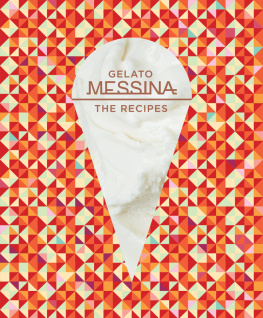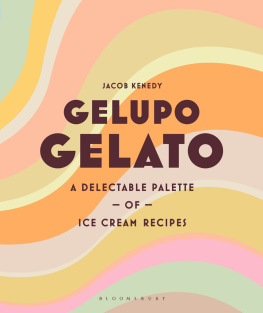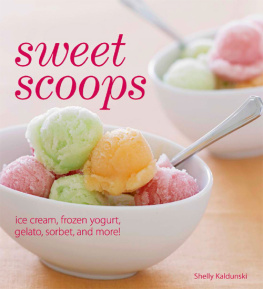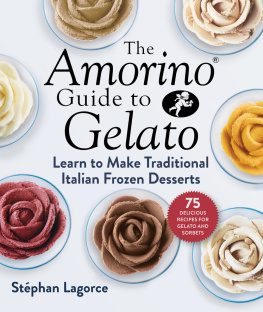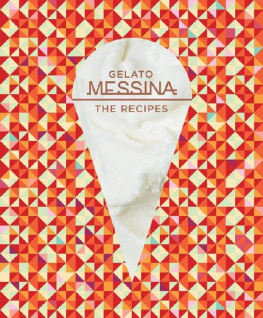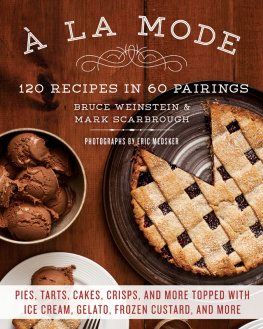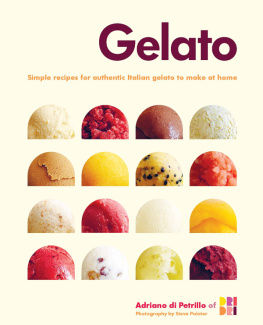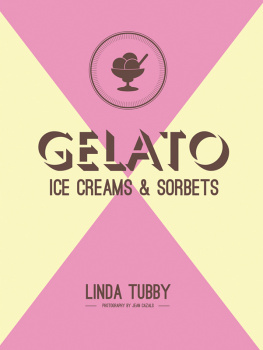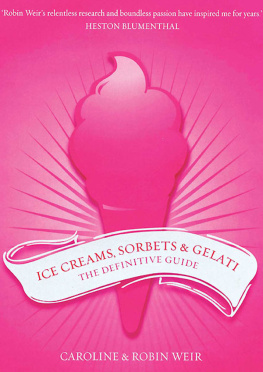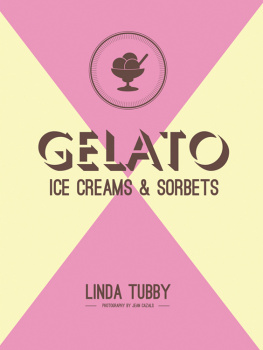


CONTENTS

I can still pinpoint the exact moment when I realised food was something to be enjoyed and not just something you ate to stop hunger pains and to keep your mum off your back. I was eight when my father took us back to Messina, Sicily, and I met my grandparents for the first time.
Shortly after our arrival, my grandfather took us to his favourite patisserie, Irerra. Its been operating since 1910 and my grandfather went there all his life. It was only 9 am but he ordered me a granita di fragola con panna e brioche, a wild strawberry granita served with whipped cream and a brioche, which you dip into the granita and cream. I remember thinking how crazy it was, that we were eating this for breakfast! Thirty years on and I can still taste it, and if I had to pick one moment in my life when I discovered food, that was it.
Like most Sicilians, my grandfather was very fussy when it came to food. There was only one guy with the freshest fish, only one baker who made the best bread, only one place to buy your fruit and vegetables, and so on. He could not comprehend the thought of buying all his groceries from just the one place, because how could one guy have the best meat, the best fish, the best fruit impossible! And if a Sicilian isnt eating or cooking, then theyre talking about food. No meal is complete without a discussion on what well be eating at the next meal, a concept my wife, Kellie, is just coming to terms with now.
Ive been asked many times why I love making gelato and, to be honest, its not that usual clich about PASSION. I make gelato because gelato found me. Perhaps its the Sicilian blood coursing through my veins, but when I walked into Irerra that day with my grandfather, something clicked for me and its been with me ever since. Even our logo and the design of our stores borrow heavily from the Irerra store, because thats where it all began. Irerra is famous for its patisserie and what Im aiming to achieve is to build my own interpretation of the great Irerra, but focused on gelato.
Im an Adelaide boy and have worked in cafes and restaurants all my working life. I was both fortunate and unlucky to get into my first business when I was twenty-two. Fortunate because it taught me a lot about running a business from such an early age, but unlucky because most of my twenties was virtually consumed with work while all my friends were out having fun. But I dont regret it for a minute.
In those early years, we introduced our own gelato into one of our cafes. We employed a guy to make it for us, but he was very unreliable and we often had to beg him to come in to work; in those days, there werent many gelato makers around. I was so annoyed with him that I began to think, How hard can gelato making be? And so it began
I think that because I didnt have a background in gelato making, I became quite precise when formulating recipes, and I had a ferocious appetite to learn and experiment. Even to this day, I still sometimes doubt myself, so I make it my goal to learn something new about gelato every day.
Towards the end of my twenties, I sold my business in Adelaide and headed to Sydney, with the idea of starting up a gelato store. A family friend found me a position at Ferrero, where he worked. It was only meant to be a temporary thing, but I ended up staying for three years. I loved working there so much that I began to think of taking up a career in the corporate world, but the call of the gelato was too strong!
I treasure my days at Ferrero. Working for a family-owned business with over 6 billion dollars in annual global sales was truly a unique experience. I think this is where I formulated the business plan for Messina. Ferrero taught me that sales and profit can never come before quality, innovation and providing customers with a pleasurable experience that they could afford. Im not ashamed to say that these are the same founding principles of Messina.
When Messina opened its doors in 2002 in Darlinghurst, gelato in Australia didnt have a great reputation. It was perceived as an icy, hard, watery type of ice cream, and it wasnt very popular. My dream was to sell the kind of gelato that you ate in Italy, to show that gelato could be creamy, full bodied, fun and, most of all, innovative.
My dream was to sell the kind of gelato that you ate in Italy
I also wanted to ensure that all the components that went into my gelato were made from scratch. It took years to get to this point and a lot of investment in equipment, but now we can finally claim that everything from the hazelnut paste right through to chocolate brownies that goes into our gelato is made in-house.

I love making gelato and I hope you will also find enjoyment in making these recipes, whether you are a professional wanting to introduce gelato into your menu or a home cook with a passion for gelato.
Like any food product, especially in the gelato and patisserie arena, there are several key ingredients that are critical to achieving a well-balanced and textured product. Some of these ingredients are for taste, some for texture and some are simply necessary in order for the gelato to be edible at a subzero temperature.
The purpose of this chapter is not to get down to the scientific level but, rather, to give you a brief idea of why we use certain ingredients and the effects they have on your recipe.
Gelato making is an ever-evolving process and new research is coming out all the time, so if this sort of thing intrigues you and youd like to learn more, there is ample information on the internet, or sign up for a gelato course; these are run by companies such as Carpigiani (makers of gelato equipment) at various times of the year.
WATER
It may seem strange to think of water as an ingredient, but whether we are talking about a gelato, ice cream or sorbet, water by weight is the most voluminous ingredient in any recipe.
Milk and cream by weight hold the largest amount in any ice cream or gelato recipe, but milk is nearly 90% water and cream is almost 60% water, so you can see that most recipes contain quite a lot of water. Sorbets, too, are generally made with fresh fruits and water, and because most fruits contain about 90% water, again you can see that water is the dominating ingredient.
But what happens when water is chilled to 0C (32F)? Obviously, it begins to turn into ice. So if water turns into ice and we have a large amount of water in all gelato, ice creams and sorbets, this could become a major problem we arent making flavoured ice blocks, we are making gelato and there shouldnt be any ice in gelato.
there are several key ingredients that are critical to achieving a well-balanced and textured product.
A well-balanced recipe ensures that all the water present finds a home it gets absorbed by a solid and therefore will not present itself as an ice crystal in your finished gelato.
Water is readily absorbed by some solids such as sugars, but it wont be absorbed by solids like fats, so there will always be a percentage of water that is not absorbed but is bound to another ingredient, such as fat. The result, however, is the same: less chance of free-flowing water, which can turn into ice and destroy the texture of your gelato.
When we talk about total percentage of water in a recipe, we have some general rules that account for almost all gelato, but please remember that there will always be exceptions to the rule.
Next page
